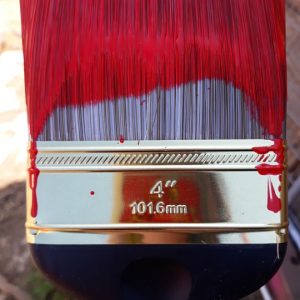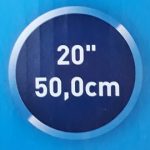1.15: Converting Between Systems
- Page ID
- 153119
\( \newcommand{\vecs}[1]{\overset { \scriptstyle \rightharpoonup} {\mathbf{#1}} } \)
\( \newcommand{\vecd}[1]{\overset{-\!-\!\rightharpoonup}{\vphantom{a}\smash {#1}}} \)
\( \newcommand{\dsum}{\displaystyle\sum\limits} \)
\( \newcommand{\dint}{\displaystyle\int\limits} \)
\( \newcommand{\dlim}{\displaystyle\lim\limits} \)
\( \newcommand{\id}{\mathrm{id}}\) \( \newcommand{\Span}{\mathrm{span}}\)
( \newcommand{\kernel}{\mathrm{null}\,}\) \( \newcommand{\range}{\mathrm{range}\,}\)
\( \newcommand{\RealPart}{\mathrm{Re}}\) \( \newcommand{\ImaginaryPart}{\mathrm{Im}}\)
\( \newcommand{\Argument}{\mathrm{Arg}}\) \( \newcommand{\norm}[1]{\| #1 \|}\)
\( \newcommand{\inner}[2]{\langle #1, #2 \rangle}\)
\( \newcommand{\Span}{\mathrm{span}}\)
\( \newcommand{\id}{\mathrm{id}}\)
\( \newcommand{\Span}{\mathrm{span}}\)
\( \newcommand{\kernel}{\mathrm{null}\,}\)
\( \newcommand{\range}{\mathrm{range}\,}\)
\( \newcommand{\RealPart}{\mathrm{Re}}\)
\( \newcommand{\ImaginaryPart}{\mathrm{Im}}\)
\( \newcommand{\Argument}{\mathrm{Arg}}\)
\( \newcommand{\norm}[1]{\| #1 \|}\)
\( \newcommand{\inner}[2]{\langle #1, #2 \rangle}\)
\( \newcommand{\Span}{\mathrm{span}}\) \( \newcommand{\AA}{\unicode[.8,0]{x212B}}\)
\( \newcommand{\vectorA}[1]{\vec{#1}} % arrow\)
\( \newcommand{\vectorAt}[1]{\vec{\text{#1}}} % arrow\)
\( \newcommand{\vectorB}[1]{\overset { \scriptstyle \rightharpoonup} {\mathbf{#1}} } \)
\( \newcommand{\vectorC}[1]{\textbf{#1}} \)
\( \newcommand{\vectorD}[1]{\overrightarrow{#1}} \)
\( \newcommand{\vectorDt}[1]{\overrightarrow{\text{#1}}} \)
\( \newcommand{\vectE}[1]{\overset{-\!-\!\rightharpoonup}{\vphantom{a}\smash{\mathbf {#1}}}} \)
\( \newcommand{\vecs}[1]{\overset { \scriptstyle \rightharpoonup} {\mathbf{#1}} } \)
\( \newcommand{\vecd}[1]{\overset{-\!-\!\rightharpoonup}{\vphantom{a}\smash {#1}}} \)
\(\newcommand{\avec}{\mathbf a}\) \(\newcommand{\bvec}{\mathbf b}\) \(\newcommand{\cvec}{\mathbf c}\) \(\newcommand{\dvec}{\mathbf d}\) \(\newcommand{\dtil}{\widetilde{\mathbf d}}\) \(\newcommand{\evec}{\mathbf e}\) \(\newcommand{\fvec}{\mathbf f}\) \(\newcommand{\nvec}{\mathbf n}\) \(\newcommand{\pvec}{\mathbf p}\) \(\newcommand{\qvec}{\mathbf q}\) \(\newcommand{\svec}{\mathbf s}\) \(\newcommand{\tvec}{\mathbf t}\) \(\newcommand{\uvec}{\mathbf u}\) \(\newcommand{\vvec}{\mathbf v}\) \(\newcommand{\wvec}{\mathbf w}\) \(\newcommand{\xvec}{\mathbf x}\) \(\newcommand{\yvec}{\mathbf y}\) \(\newcommand{\zvec}{\mathbf z}\) \(\newcommand{\rvec}{\mathbf r}\) \(\newcommand{\mvec}{\mathbf m}\) \(\newcommand{\zerovec}{\mathbf 0}\) \(\newcommand{\onevec}{\mathbf 1}\) \(\newcommand{\real}{\mathbb R}\) \(\newcommand{\twovec}[2]{\left[\begin{array}{r}#1 \\ #2 \end{array}\right]}\) \(\newcommand{\ctwovec}[2]{\left[\begin{array}{c}#1 \\ #2 \end{array}\right]}\) \(\newcommand{\threevec}[3]{\left[\begin{array}{r}#1 \\ #2 \\ #3 \end{array}\right]}\) \(\newcommand{\cthreevec}[3]{\left[\begin{array}{c}#1 \\ #2 \\ #3 \end{array}\right]}\) \(\newcommand{\fourvec}[4]{\left[\begin{array}{r}#1 \\ #2 \\ #3 \\ #4 \end{array}\right]}\) \(\newcommand{\cfourvec}[4]{\left[\begin{array}{c}#1 \\ #2 \\ #3 \\ #4 \end{array}\right]}\) \(\newcommand{\fivevec}[5]{\left[\begin{array}{r}#1 \\ #2 \\ #3 \\ #4 \\ #5 \\ \end{array}\right]}\) \(\newcommand{\cfivevec}[5]{\left[\begin{array}{c}#1 \\ #2 \\ #3 \\ #4 \\ #5 \\ \end{array}\right]}\) \(\newcommand{\mattwo}[4]{\left[\begin{array}{rr}#1 \amp #2 \\ #3 \amp #4 \\ \end{array}\right]}\) \(\newcommand{\laspan}[1]{\text{Span}\{#1\}}\) \(\newcommand{\bcal}{\cal B}\) \(\newcommand{\ccal}{\cal C}\) \(\newcommand{\scal}{\cal S}\) \(\newcommand{\wcal}{\cal W}\) \(\newcommand{\ecal}{\cal E}\) \(\newcommand{\coords}[2]{\left\{#1\right\}_{#2}}\) \(\newcommand{\gray}[1]{\color{gray}{#1}}\) \(\newcommand{\lgray}[1]{\color{lightgray}{#1}}\) \(\newcommand{\rank}{\operatorname{rank}}\) \(\newcommand{\row}{\text{Row}}\) \(\newcommand{\col}{\text{Col}}\) \(\renewcommand{\row}{\text{Row}}\) \(\newcommand{\nul}{\text{Nul}}\) \(\newcommand{\var}{\text{Var}}\) \(\newcommand{\corr}{\text{corr}}\) \(\newcommand{\len}[1]{\left|#1\right|}\) \(\newcommand{\bbar}{\overline{\bvec}}\) \(\newcommand{\bhat}{\widehat{\bvec}}\) \(\newcommand{\bperp}{\bvec^\perp}\) \(\newcommand{\xhat}{\widehat{\xvec}}\) \(\newcommand{\vhat}{\widehat{\vvec}}\) \(\newcommand{\uhat}{\widehat{\uvec}}\) \(\newcommand{\what}{\widehat{\wvec}}\) \(\newcommand{\Sighat}{\widehat{\Sigma}}\) \(\newcommand{\lt}{<}\) \(\newcommand{\gt}{>}\) \(\newcommand{\amp}{&}\) \(\definecolor{fillinmathshade}{gray}{0.9}\)
You may use a calculator throughout this module.
Converting between the U.S. system and metric system is important in today’s global economy; like it or not, the metric system is infiltrating our lives.
The numbers in these conversion ratios are usually difficult to work with, so we will use a calculator whenever necessary and pay attention to rounding. If you discover other conversion ratios that aren’t provided here, write them down!
Converting Measurements of Length
Some of these conversion ratios are exact, because a yard is defined to be exactly \(0.9144\) meters, which means that a foot is exactly \(0.3048\) meters and an inch is exactly \(2.54\) centimeters.[1] The conversions that are not exact are rounded to four significant figures.
\(1\) in = \(2.54\) cm
\(1\) ft = \(30.48\) cm
\(1\) ft = \(0.3048\) m or \(1\) m \(\approx 3.281\) ft
\(1\) yd = \(0.9144\) m or \(1\) m \(\approx 1.094\) yd
\(1\) mi \(\approx 1.609\) km or \(1\) km \(\approx 0.6214\) mi
Let’s verify that \(1.98\text{ m}\) is actually \(6\text{ ft }6\text{ in}\). We can start by writing \(1.98\text{ m}\) as a fraction over 1 and then use the conversion ratio \(1\text{ ft}=0.3048\text{ m}\) to cancel the units.
\[\dfrac{1.98\text{ m}}{1}\cdot\dfrac{1\text{ ft}}{0.3048\text{ m}}=\dfrac{1.98}{0.3048}\text{ ft}\approx6.49606\text{ ft} \nonumber \]
Rounding to three sig figs,[2] that’s \(6.50\text{ ft}\), which of course is \(6\text{ ft }6\text{ in}\).
Let’s verify that again using the approximate conversion ratio \(1\text{ m}\approx3.281\text{ ft}\).
\[\dfrac{1.98\text{ m}}{1}\cdot\dfrac{3.281\text{ ft}}{1\text{ m}}=1.98\cdot3.281\text{ ft}\approx6.49638\text{ ft} \nonumber \]
Okay, everything looks good; both conversions give us a result that rounds to \(6.50\text{ ft}\). As long as we don’t try to keep more than four sig figs in our result, we can use either conversion ratio and get the same result.
- In Canada, if a road in a city does not have a speed limit posted, the default speed limit is \(50\text{ km}\) per hour.[3] Convert \(50\text{ km}\) into miles.
- A Star Wars clone trooper is 6.00 feet tall. Convert this height to cm.
- An Olympic-size swimming pool is \(50.000\) meters in length.[4] How many feet is this?
- A 4-inch paintbrush is labeled \(101.6\) millimeters. Verify the accuracy of this conversion.

- An electric fan has an advertised diameter of \(20\) inches, or \(50.0\) centimeters. Verify the accuracy of this conversion.

- Is \(21\) kilometers equivalent to \(13\) miles? If not, what is the percent error?

Converting Measurements of Weight or Mass
These conversions are approximate. (Technically, one pound is exactly 0.45359237 kilograms[5], but we’ll stick to four significant figures.)
\(1\) oz \(\approx 28.35\) g
\(1\) kg \(\approx 2.205\) lb or \(1\) lb \(\approx 0.4536\) kg

As shown in the picture, a shelving system is rated to hold a total weight of \(3,250\) pounds, or \(650\) pounds on each of its five shelves. The metric equivalents printed on the box are \(1,474.1\) kilograms and \(294.8\) kilograms.
- Convert \(650\) pounds into kilograms. Does your answer agree with the number printed on the box?
- Convert \(3,250\) pounds into kilograms. Does your answer agree with the number printed on the box?
- A hand weight weighs 5 kilograms. Convert 5 kilograms to pounds.
- How many grams is a half pound of ground beef?
- A gravy recipe calls for 4 ounces of flour. Convert 4 ounces into grams.
- A smoothie recipe has \(50\) grams of protein. Convert \(50\) grams to ounces.
- In around 2010, the National Collector’s Mint (not affiliated with the U.S. Mint) ran a TV commercial selling an imitation \($50\) gold coin modeled after the U.S. “buffalo” nickel. The commercial made the following claims. This replica coin is coated in \(31\) milligrams of pure gold! And the price of gold keeps going up; gold is worth about \($1,000\) per ounce! But you can order these fake coins for only \($19.95\) apiece! What was the approximate dollar value of the gold in one of these coins?
- In 2023, the National Collector’s Mint was still selling the imitation \($50\) gold “buffalo” nickel, but had cut the price to \($9.95\). This version of the coin was coated in \(14\) milligrams of pure gold.[6] The price of gold in 2023 was \($2,000\) per ounce. What was the approximate dollar value of the gold in one of these coins?
Converting Measurements of Volume or Capacity
These conversion ratios are approximations rounded to four significant figures.
\(1\) fl oz \(\approx 29.57\) mL
\(1\) L \(\approx 33.81\) fl oz
\(1\) L \(\approx 1.057\) qt
\(1\) gal \(\approx 3.785\) L
- Stephanie lives in Vermont and buys her home renovation supplies at Réno-Dépôt in Quebec. She buys a toilet that uses 4.8 L of water per flush. How many gallons is this?
- How many milliliters of drink are in a 12-ounce can?
- TSA airline regulations limit liquids in carry-on luggage to 100 milliliters. How many fluid ounces is this? (Round your answer to the nearest tenth.)
- If you visit an oil change shop, you may notice large boxes of motor oil. (If you teach math, you may even take a picture of one so you can use it in your course materials.) Verify that 6 gallons of motor oil is equivalent to 22.7 liters.

Converting Measurements: Extensions
Let’s finish up with some rates that require conversions.
Maxine is driving across Canada. Her car has a 14.2-gallon gas tank and gets an average of 26 miles per gallon.
- Approximately how many kilometers—actually, the Canadian spelling is kilometres. Approximately how many kilometres can she travel on a full tank of gas?
- Of course, Canada measures gas in liters. Actually, litres. Convert Maxine’s mileage rate, 26 miles per gallon, to kilometres per litre.

- Source: en.Wikipedia.org/wiki/International_yard_and_pound↵
- We round to three sig figs because the measurement 1.98 meters has only three sig figs. ↵
- Source: niagarafalls.ca/city-hall/transportation-services/traffic/speed-limits.aspx↵
- Source: https://swimswam.com/how-big-is-an-olympic-sized-swimming-pool/↵
- Source: https://en.Wikipedia.org/wiki/International_yard_and_pound↵
- Source: ncmint.com/2023-buffalo-tribute-proof/↵

